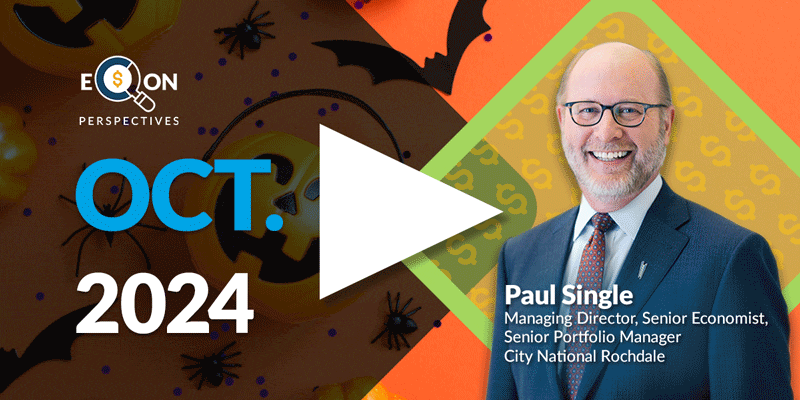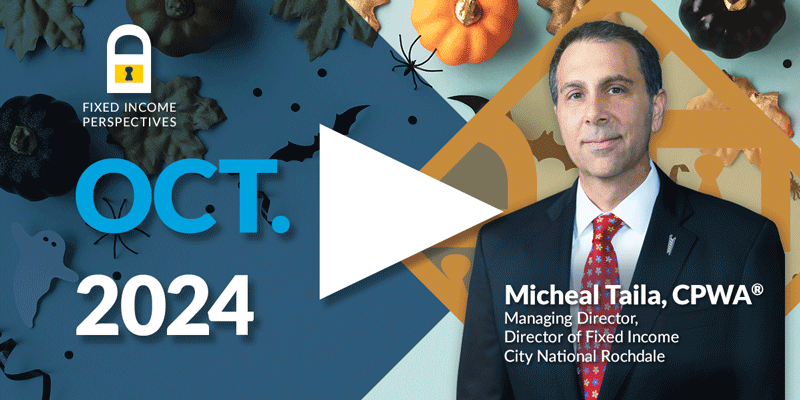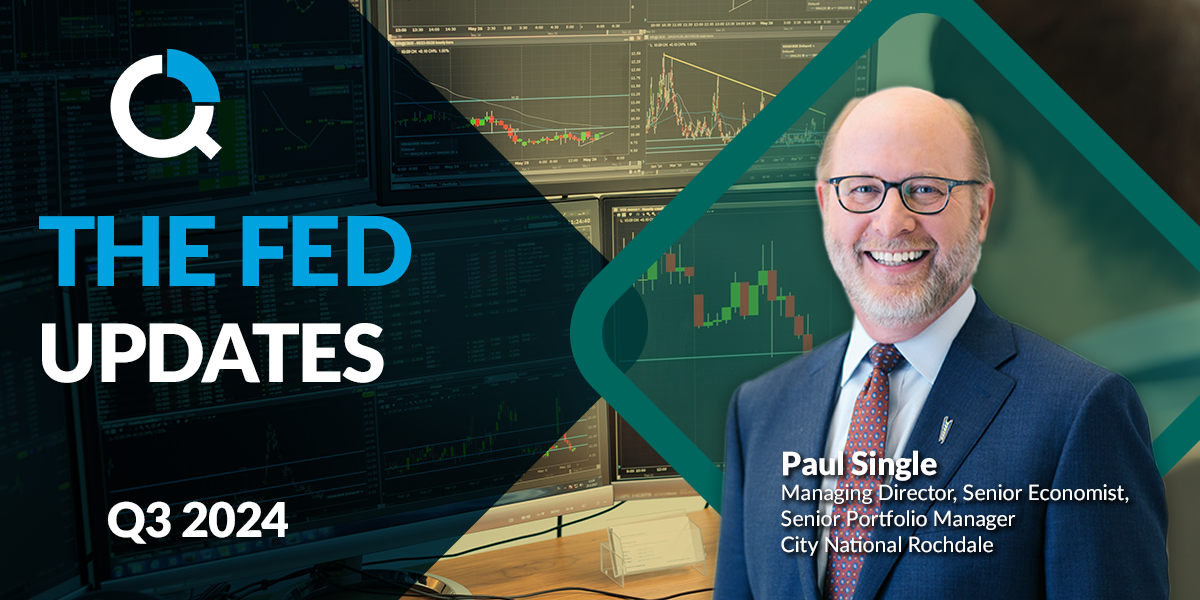

FAQs on the Markets and Economy
Is the labor market starting to slow?
Job growth remains strong, but cracks are emerging.
This October report was broadly a continuation of the strong labor growth that has been in place all year. So far in 2022, payrolls have increased by 4.7 million, far better than the average growth of 2.3 million in most good years (see chart).
That said, the pace of employment growth is moderating, just not fast enough for the Fed. The monthly data can be volatile, so economists tend to follow a three-month trend, which shows growth has been slowing since December. Another important component of this report is wage growth, which continues to moderate. After peaking in March at 5.6%, the annual change now stands at 4.7%, and the last three months’ annualized rate sits at just 3.9%. For comparison, in the year before the pandemic, it averaged 3.3%.
The persistent worker shortage has led companies to avoid layoffs (you can’t fire someone you never hired), and when employees do quit, companies are quickly replacing the workers that left. But that will change as the risk of entering a recession increases due to the Fed’s aggressive approach to monetary policy, domestic and global demand softening, and borrowing costs increasing. Will companies continue to hire? It is hard to know if and when that will happen. The best indicator for that is the initial weekly claims for unemployment insurance, but that has yet to budge from near-record low levels.

What insights can be gleaned from the recent Fed meeting?
The Fed raised the federal funds rate by 75 basis points (bps) to 3.875%, which was universally expected, and they laid the groundwork for a probable drop down to a 50-bps hike at the next meeting in mid-December.
But a more hawkish tone came from Powell’s press conference, where he stated that the Fed is not done tightening monetary policy. And the Fed may have to raise interest rates higher than most members thought in September when they released their interest rate forecast of a peak federal funds rate of 4.6%.
This was an important move for the Fed. It is not a dovish pivot. The Fed acknowledges that the 375-bps rate hike so far this year will cause the economy to slow and inflationary pressures to decline. It hasn’t shown up in the data yet due to the lag effect monetary policy has on economic growth. The Fed is just as hawkish as it was before this meeting. The Fed still has more interest rate hikes planned for this year and next year because there is still a need (inflation-adjusted fed funds are still negative; (see chart). Powell stated that the slower pace should not be interpreted as signaling an imminent pause.

What was behind last week’s market rally?
Turmoil in cryptocurrency, uncertainty over the midterm election, and signs of moderating inflation all took turns driving wild swings in market sentiment.
By the end of the week, though, major U.S. stock indexes had rebounded in a big way from the previous week’s declines, driven largely by a one-day rally on Thursday that was the strongest in two and a half years. While encouraging, we think it’s still too early to signal the all-clear sign and continue to recommend caution in the near term.
The main catalyst was the October consumer price index (CPI) report, which came in better than expected and fueled speculation the Fed could soon begin to scale back the size of interstate increases. Although signs of moderating inflation are certainly positive, one month doesn’t make a trend and we don’t expect policymakers to abandon their higher-for-longer narrative just yet. Inflation remains too high for comfort, and officials will want to see several consecutive months of lower readings before considering a pause.
In the meanwhile, incoming data continues to point to slowing economic momentum with higher interest rates and rising costs finally hitting Corporate America’s bottom lines. With the Q3 earnings season nearly complete and tracking the lowest growth rate (2.2%) since 2020, analyst expectations for Q4 have now been revised down to -1.0%. At the end of September, analysts had forecast earnings to rise 3.9%.
Over the last couple of months, we have argued that earnings estimates would likely be revised lower to reflect the more challenging macroeconomic backdrop and rising recession risk. While earnings growth forecasts for 2023 have declined to 5.8% from about 10% since May of this year, we continue to think they remain too optimistic. In a scenario where the economy enters a mild recession next year, we would expect earnings growth to stagnate or even contract.
Relief rallies are common in bear markets. We think bottoming will be a process that could take some time to play out, and further swings in sentiment are likely as investors gain greater clarity on the outlook, particularly with rate hikes and inflation, and weigh their implications for the economy and corporate profits. In particular, we suspect further downward earnings revisions could be a catalyst for additional market declines ahead before a sustainable recovery in equity prices can begin.

Are there investment opportunities in municipal bonds?
Municipal investors should consider the evolving backdrop where value opportunities continue to surface amid volatile market conditions.
Absolute yields are meaningfully higher today than at the beginning of the year, as the municipal curve has experienced a sharp rise in rates of between 250 bps and nearly 300 bps, per Bloomberg. The layering of higher municipal yields within bond portfolios not only raises overall book yield but strengthens the competitiveness of its tax-exempt cash flows. Thus, income or “coupon carry” increasingly provides a protective buffer against continued policy and recessionary uncertainty.
Relative value indicators, such as the relationship between tax-exempt yields and comparable Treasury securities, point to fair-to-attractive municipal valuations. Throughout the year, municipal fund outflows of more than $100 billion (through October) have reflected the Fed’s aggressive tightening policy designed to curb excessive inflation. At the same time, constrained market issuance, given central bank uncertainty and more expensive financing terms, provided technical support that could extend into 2023, with projected reinvestment needs approximating $360 billion, per Bloomberg. Should municipal fund flows stabilize and Treasuries trade in a tighter range amid clarity around Fed policy, municipal bonds should benefit, leading to potentially attractive forward-looking returns (an observable pattern during previous tightening cycles).
Year-to-date performance has hinged mainly on the behavior of rates and less so on credit spreads. According to Bloomberg indices, A- and AA-rated 10-year bonds widened by about 40 bps and 10 bps, respectively, since the beginning of the year. Of note, spreads moved modestly over the past six months due to pockets of market demand. Despite favorable rating trends and healthy balance sheet flexibility, security and sector selection remain essential due to likely softness in the broader economy that might lead to a more pronounced weakening in revenue collections. We believe municipal bonds will play a critical role in a diversified asset allocation strategy throughout 2023, providing safety and preservation of capital for investors seeking attractive tax-exempt income.

Important Disclosures
The information presented does not involve the rendering of personalized investment, financial, legal or tax advice. This presentation is not an offer to buy or sell, or a solicitation of any offer to buy or sell, any of the securities mentioned herein.
Certain statements contained herein may constitute projections, forecasts and other forward-looking statements, which do not reflect actual results and are based primarily upon a hypothetical set of assumptions applied to certain historical financial infor-mation. Certain information has been provided by third-party sources, and although believed to be reliable, it has not been inde-pendently verified, and its accuracy or completeness cannot be guaranteed.
Any opinions, projections, forecasts and forward-looking statements presented herein are valid as of the date of this document and are subject to change.
There are inherent risks with equity investing. These include, but are not limited to, stock market, manager or investment style risks. Stock markets tend to move in cycles, with periods of rising prices and periods of falling prices.
Investing in international markets carries risks such as currency fluctuation, regulatory risks and economic and political instability.
There are inherent risks with fixed income investing. These may include, but are not limited to, interest rate, call, credit, market, inflation, government policy, liquidity or junk bond risks. When interest rates rise, bond prices fall. This risk is heightened with in-vestments in longer-duration fixed income securities and during periods when prevailing interest rates are low or negative.
Investing involves risk, including the loss of principal.
As with any investment strategy, there is no guarantee that investment objectives will be met, and investors may lose money.
Past performance is no guarantee of future performance.
This material is available to advisory and sub-advised clients, as well as financial professionals working with City National Rochdale, a registered investment advisor and a wholly-owned subsidiary of City National Bank. City National Bank provides investment management services through its sub-advisory relationship with City National Rochdale.
Non Deposit Investment Products are: Not FDIC Insured, Not Bank Guaranteed, May Lose Value
The information presented does not involve the rendering of personalized investment, financial, legal, or tax advice. This presentation is not an offer to buy or sell, or a solicitation of any offer to buy or sell any of the securities mentioned herein.
Certain statements contained herein may constitute projections, forecasts and other forward-looking statements, which do not reflect actual results and are based primarily upon a hypothetical set of assumptions applied to certain historical financial information. Readers are cautioned that such forward-looking statements are not a guarantee of future results, involve risks and uncertainties, and actual results may differ materially from those statement. Certain information has been provided by third-party sources and, although believed to be reliable, it has not been independently verified and its accuracy or completeness cannot be guaranteed.
Past performance or performance based upon assumptions is no guarantee of future results.
Indices are unmanaged and one cannot invest directly in an index. Index returns do not reflect a deduction for fees or expenses.
Any opinions, projections, forecasts, and forward-looking statements presented herein are valid as on the date of this document and are subject to change.
All investing is subject to risk, including the possible loss of the money you invest. As with any investment strategy, there is no guarantee that investment objectives will be met and investors may lose money. Diversification does not ensure a profit or protect against a loss in a declining market. Past performance is no guarantee of future performance.
This material is available to advisory and sub-advised clients, as well as financial professionals working with City National Rochdale, a registered investment adviser and a wholly-owned subsidiary of City National Bank. City National Bank provides investment management services through its sub-advisory relationship with City National Rochdale.
INDEX DEFINITIONS
S&P 500 Index: The S&P 500 Index, or Standard & Poor’s 500 Index, is a market-capitalization-weighted index of 500 leading pub-licly traded companies in the U.S. It is not an exact list of the top 500 U.S. companies by market cap because there are other criteria that the index includes.
Muni Bond: A municipal bond is a debt security issued by a state, municipality or county to finance its capital expenditures, including the construction of highways, bridges or schools. These bonds can be thought of as loans that investors make to local govern-ments.
Bloomberg Barclays U.S. Corporate High Yield Bond Index: measures the USD denominated, high-yield, fixed-rate corporate bond market.
Dow Jones Select Dividend Index: The Dow Jones U.S. Select Dividend Index looks to target 100 dividend-paying stocks screened for factors that include the dividend growth rate, the dividend payout ratio and the trading volume. The components are then weighted by the dividend yield.
CBO: A collateralized bond obligation (CBO) is a type of structured debt security that has investment-grade bonds as the underlying assets backed by the receivables on high-yield or junk bonds.
Moody’s: Moody’s Corporation (MCO) is the holding company that owns both Moody’s Investors Service, which rates fixed income debt securities, and Moody’s Analytics, which provides software and research for economic analysis and risk management. Moody’s assigns ratings on the basis of assessed risk and the borrower’s ability to make interest payments, and its ratings are closely watched by many investors.
Penn Wharton Budget Model: Penn Wharton Budget Model’s (PWBM) tax policy simulator allows policymakers, members of the media, and the general public (“users”) to see the impact that potential reforms to tax policy will have on many the economy and the federal budget.
NDMC: National Drought Mitigation Center (NDMC) The National Drought Mitigation Center’s mission is to reduce the effects of drought on people, the environment and the economy by researching the science of drought monitoring and the practice of drought planning.
NOAA: The National Oceanic and Atmospheric Administration (NOAA) is an American scientific and regulatory agency within the United States Department of Commerce that forecasts weather, monitors oceanic and atmospheric conditions, charts the seas, conducts deep sea exploration, and manages fishing and protection of marine mammals and endangered species in the U.S. exclusive economic zone.
USDA: The United States Department of Agriculture (USDA) is the federal executive department responsible for developing and executing federal laws related to farming, forestry, rural economic development, and food.
The SIFMA Municipal Swap Index: The Securities Industry and Financial Markets Association Municipal Swap Index is a 7-day high-grade market index comprised of tax-exempt Variable Rate Demand Obli-gations (VRDOs) with certain characteristics. The Index is calculated and published by Bloomberg. The Index is overseen by SIFMA’s Municipal Swap Index Committee.
CalPERS: The California Public Employees’ Retirement System, also known as CalPERS, is an organization that provides numerous benefits to its 2 million members, of which 38% are school members, 31% public agency members, and 31% state members.
4Ps: The 4P analysis is a proprietary framework for global equity allocation. Country rankings are derived from a subjective metrics system that combines the economic data for such countries with other factors including fiscal policies, demographics, innovative growth and corporate growth. These rankings are subjective and may be derived from data that contain inherent limitations.
Stay Informed.
Get our Insights delivered straight to your inbox.
Put our insights to work for you.
If you have a client with more than $1 million in investable assets and want to find out about the benefits of our intelligently personalized portfolio management, speak with an investment consultant near you today.
If you’re a high-net-worth client who's interested in adding an experienced investment manager to your financial team, learn more about working with us here


